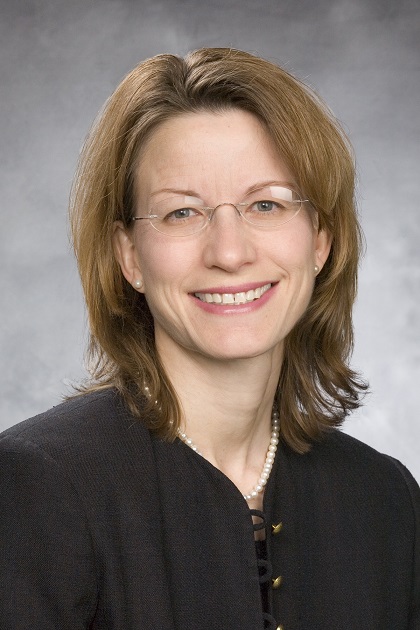Improving Health Behaviors
Laura DeFina, MD, FACP, believes that consistency and coordination of accurate messaging and action are critical practices for fitness professionals.

Laura DeFina, MD, FACP, is president and CEO of The Cooper Institute®, as well as its chief science officer. After practicing general internal medicine and geriatrics, she joined The Cooper Institute in 2009 to pursue her interests in prevention and research related to healthy aging. Since then, she has authored manuscripts on, among other topics, brain health, healthy aging, depression, cardiorespiratory fitness and injury in physically active women. Outside of The Cooper Institute, DeFina has served on the Prevention and Brain Health Group for the Texas State Plan on Alzheimer's Disease since 2009, and was appointed to the Texas Council on Alzheimer's Disease and Related Disorders by Governor Rick Perry in 2013.
ACE: How do you think obesity influences the patient-physician interaction during an office visit?
Laura DeFina: The office visit for an obese patient is often focused on addressing the sequelae—or secondary consequences—of obesity (e.g., diabetes or hyperlipidemia), instead of addressing the core issue of obesity. The limited time available with each patient, coupled with the complexity of the related health issues, decreases the amount of time clinicians spend addressing the treatment of obesity and the difficult lifestyle changes that are necessary. Educating healthcare professionals and their teams on best practices to assist their patients in developing lifestyle behaviors that will help them get fitter and regain healthier lives is crucial in addressing the obesity epidemic.
ACE: In what ways can the healthcare community provide accessible and effective physical activity programs to help people age healthfully?
Laura DeFina: Evidence suggests that when a healthcare provider encourages physical activity, patients are more likely to actually change their exercise habits. Just like a prescription for medications, a formal exercise prescription that defines exercise goals gives patients and their families clear understanding of what they must do to be healthy and fit. This includes type of activity, time doing the activity and intensity required. Furthermore, healthcare providers are often in tune with the social, safety and built-environment issues in the communities that surround their practices, which allows providers to recommend and participate in community-friendly activities. It is also critical for providers to engage grass-roots volunteers to encourage community-based initiatives that promote physical activity and healthy eating.
ACE: To what extent do you believe local and state governments can help to guide communities on the path of enhancing opportunities for physical activity?
Laura DeFina: I believe the involvement of local and state governments is critical in ensuring that the built environment supports both the geographic opportunities to be active and the necessary safety features that entice people to be active, such as law enforcement or appropriate lighting. Further, at a state level, legislative efforts to ensure that physical education, recess and fitness assessment remain in school (K—12) must be supported to begin teaching healthy physical activity behaviors early in the lifespan.
ACE: What do you think healthcare professionals can do to make discussions concerning increased physical activity and healthy nutrition more appealing to patients and clients?
Laura DeFina: First and foremost, healthcare professionals—in school and in practice—need appropriate and culturally sensitive training regarding physical activity and healthy nutrition, as well as training on how to help patients implement effective programs. This education should include an understanding of the health benefits of physical activity; the basics of writing an exercise prescription; and an understanding of options for promoting physical activity in a variety of communities. Once armed with clear content, healthcare providers must address this issue with their patients on a personal level, taking into account their health, their mobility and their options. Meeting people where they are with activities they enjoy is the best way to get patients moving. Additionally, physicians who partner with patients in physical activity and healthy eating plans have successfully increased engagement via programs such as Walk with Your Doctor.
ACE: In your opinion, how can health and fitness professionals present themselves as viable, trusted resources for helping their communities combat the obesity epidemic?
Laura DeFina: Addressing the increasing obesity problem in the United States requires partnership among healthcare providers, fitness professionals, nutritionists, schools and so on. In order to be key players in the war on obesity, health and fitness professionals must both act as role models and provide clear, understandable information about physical activity needs. One real obstacle is the many conflicting opinions and all the "Get fit" or "Get thin" quick solutions seen in the lay press. I believe that establishing consistency and coordination of accurate messaging and action will be the most important step we can take to improve health behaviors.
Editor’s note: Bridging the Gap is a series of interviews conducted by ACE with professionals throughout the fitness and allied health industries, as well as our partners in the corporate world. ACE hopes this column will start a conversation among those entities about the impact of the obesity epidemic and how we can all work together to eliminate it by 2035.






